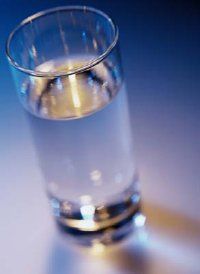Have you stopped taking an aerobics class because you're afraid you might have an "accident"? Do you identify all the restroom locations in a mall before you dare to begin shopping? Do you dread sneezing, coughing, even laughing, because you're not sure if you'll stay dry?
Rest assured, you're not alone. According to the National Institutes of Health, more than 13 million Americans suffer incontinence, oftentimes in silence. Indeed, it's a problem that's only been recognized relatively recently in America as a common, treatable condition and not an unavoidable symptom of aging.
Advertisement
As a matter of fact, other cultures in times past seemed to have been much more aware and accepting of the problem. The ancient Egyptians developed products for incontinence, and in Great Britain around the turn of the century, it was perfectly acceptable for a woman to hold what was called a "slipper" under her dress to relieve herself during a long church service.
The loss of bladder control is not a disease but a symptom with a host of possible causes. It can affect anyone at any age -- from children to the elderly, both women and men. Women, however, are three times more likely than men to be incontinent, due in large part to the physical stresses of childbearing and a decrease in estrogen after menopause.
There are four kinds of incontinence. Stress incontinence results from damage to or weakening of the muscles of the pelvis, especially the pelvic-floor muscles. This set of muscles at the bottom of the pelvis supports the lower internal organs and helps them maintain their shape and proper function. Childbirth, menopause, a fracture of the pelvis, and certain types of surgery, such as a hysterectomy (removal of the uterus) or prostatectomy (removal of the prostate gland), can cause these muscles to become deficient. As a result, any activity that puts a sudden stress or pressure on the bladder -- anything from sneezing to hitting a tennis ball -- can cause leakage of urine. Fortunately, pelvic-floor exercises can solve most cases of stress incontinence.
Someone who has urge incontinence, on the other hand, experiences a sudden need to urinate but is unable to get to the toilet in time. Urge incontinence (sometimes called overactive bladder) occurs when there is damage to the nerves that connect the brain and the bladder, resulting in uncontrollable bladder-muscle contractions that force urine out. The nerve damage itself may be caused by a stroke, trauma to the spinal cord, or a disease such as multiple sclerosis that causes nerve dysfunction.
Some people suffer from both urge and stress incontinence. They are said to have mixed incontinence.
And finally, some people suffer from overflow incontinence, in which the body produces more urine than the bladder can hold, causing leakage, or "dribbling" of the excess urine. It results from either an obstruction or poorly functioning bladder muscles, either of which prevents the bladder from emptying completely and causes an overflow of urine. An obstruction may be caused by a tumor or an enlarged prostate, while certain medications, diseases such as polio or multiple sclerosis, spinal-cord damage, or pelvic trauma or surgery can prevent the bladder muscles from working properly.
The NAFC estimates that approximately 80 percent of people who have urinary incontinence can find relief or even a cure. Depending on the type of incontinence, treatment may include changes in lifestyle or behavior, medication, special muscle exercises, surgery, or various devices and products to manage incontinence; often, a combination of these is used.
So while you'll need to see a doctor for proper diagnosis and a treatment plan, there are several home remedies to help you remain dry and free from embarrassment. Read the next page to learn more.
For more information about urinary tract problems and how to combat them, try the following links:
- To see all of our home remedies and the conditions they treat, go to our main Home Remedies page.
- To learn how to avoid coming down with an infection of the urinary tract, read How to Prevent Urinary Tract Infections.
- To ease painful urinary tract symptoms at home, try the tips in Home Remedies for Urinary Tract Infections.
- Home Remedies for Kidney Stones discusses how to prevent kidney stones from forming, and how to alleviate their symptoms.
This information is solely for informational purposes. IT IS NOT INTENDED TO PROVIDE MEDICAL ADVICE. Neither the Editors of Consumer Guide (R), Publications International, Ltd., the author nor publisher take responsibility for any possible consequences from any treatment, procedure, exercise, dietary modification, action or application of medication which results from reading or following the information contained in this information. The publication of this information does not constitute the practice of medicine, and this information does not replace the advice of your physician or other health care provider. Before undertaking any course of treatment, the reader must seek the advice of their physician or other health care provider.
Advertisement
